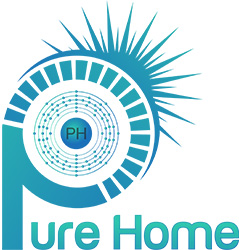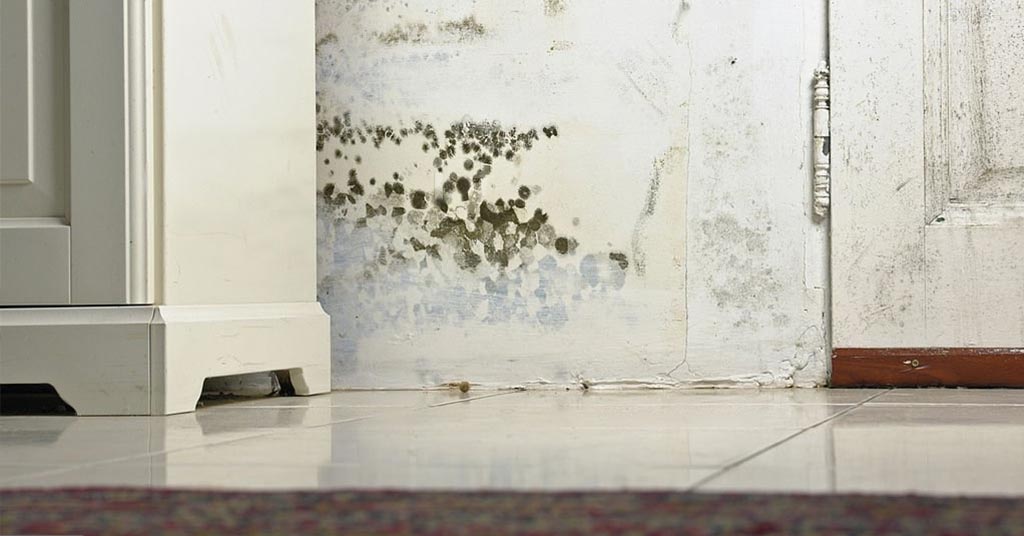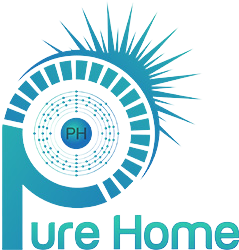How Do You Know If Your Home Has Mold?
Do you ever feel like something’s off in your home? Have you noticed a musty smell or experienced sore throats and other respiratory issues? If so, it could be time to investigate whether your house has mold. Then the next question is how do you know if your home has mold? Let’s explore the signs of infestations and how to address removing mold in your home.
What Does Mold Look Like?

Mold is a type of fungus that can cause serious health and indoor air quality problems. It can spread quickly, damaging the material it grows on and releasing spores into the air that may affect your breathing.
Unfortunately, mold often goes undetected for some time before its presence is noticed by homeowners. If you suspect there might be mold in your home, it is important to know how to identify mold and where to look for it so you can take the necessary steps to identify and contain the problem.
Mold typically appears either as black spots or as fuzzy patches of different colors, such as white, green, black or gray. The fuzzy patches may appear together, forming a sheet-like cover on various materials—common places to find this are around window frames and on basement walls.
The black spots of mold tend to form more noticeable clusters—these will often appear in damp places such as behind toilets, underneath refrigerator sealings or in corners where water may accumulate due to condensation from air conditioners or other appliances.
In addition to visual signs of growth, you may also be able to detect a musty odor in parts of the house indicating possible areas where mold has grown.
To determine if your home has a mold problem it is important to know when to call a professional for your mold who has experience with identifying mold growths. Keep an eye out for any visual cues like discoloration or spots on surfaces indoors since these are key indicators that something could be wrong.
Also pay attention for any strange musty smells since this can indicate a possible problem with household humidity levels or moisture accumulation behind walls or under carpets which could result in microbial growth over time if not addressed quickly enough by dehumidifiers or water removal services.
What Does Mold Smell Like?
If you think your home may have mold, one of the first things to do is to ask yourself what does mold smell like. Mold, just like most other fungi, has a smell similar to mildew.
If you detect a musty odor in your home, chances are there is mold present. Although the smell may be faint and can be easily mistaken for something else such as a musty closet or damp basement, it’s important to pay attention to it and investigate further.
One possible way of detecting the presence of mold in your home is by looking for visible growth. It can usually be found in places such as on walls and ceilings or around windows and doors where dampness is particularly prevalent due to condensation. If you spot any discoloration or fuzzy looking spots on walls or surfaces, this could indicate the presence of mold in your house as well.
Another way of detecting if there might be mold present in your home is by identifying typical signs that are associated with its presence such as health symptoms experienced by occupants living in the property, or higher humidity levels than what would normally be expected when they compared with similar properties nearby where no sign of it was reported by them.
Since many types of molds release volatile organic compounds (VOCs) into the air which have very distinctive aromas & odors that are hard not notice when present inside environments with significant amounts of it growing, these VOCs become another sign that more often than not indicate that there could be molds present besides simply just experiencing an unpleasant musty smell coming from somewhere within them too regardless if these visibly seen actually not yet being visible to others yet due to possibly still being hidden away from plain sight around them still being there nonetheless unseen across their inside spaces & areas nonetheless present nonetheless still nonetheless at all even so then too!
Mysterious Illnesses
Do you have mysterious illnesses that won’t seem to go away? You might want to check if your home has mold. When it comes to health concerns, experts recommend checking for mold when there are signs of a serious problem. If you experience any of the symptoms below, consider that mold may be present in your home and can cause allergic reactions and illnesses.
There are several symptoms that may point to an existing mold problem. These include chronic fatigue, headaches, dizziness or nausea, coughing or wheezing, cold-like and sinus infection symptoms, irritation and burning eyes and skin rashes. Some people may also experience muscle aches or joint pains unrelated to exercise as well as anxiety or depression.
The first step in identifying if your home has mold is by recognizing the signs of visible growth. Mold usually develops on concrete foundation walls, window sills, pipes and other materials with high moisture content, although spores can exist without obvious signs of growth in the right environment like a damp garage or basement.
Look for discoloration on walls along with a musty smell which may indicate fungi growth and spore production. Cracks in floors and ceilings should also be checked as water damage from plumbing leaks can attract mold spores which then reproduce from accumulated water droplets between walls inside of bathrooms or kitchens creating undesirable conditions for occupants’ health due to possible toxin exposure on some species types found indoors.
Conclusion: How Do You Know If Your Home Has Mold?
If you suspect there is mold in your home it is important that an inspection is conducted so that the potential health hazards can be properly assessed by licensed professionals capable of eliminating its existence from both indoor air environments as well as carpets or furniture surfaces throughout affected areas.
Taking proper action including repair work necessary for preventive purposes against future incidents involving infectious fungus contamination within living spaces should not be delayed any longer once signs appear first time around instead it should addressed soon following initial detection procedure takes place without fail as main priority.



